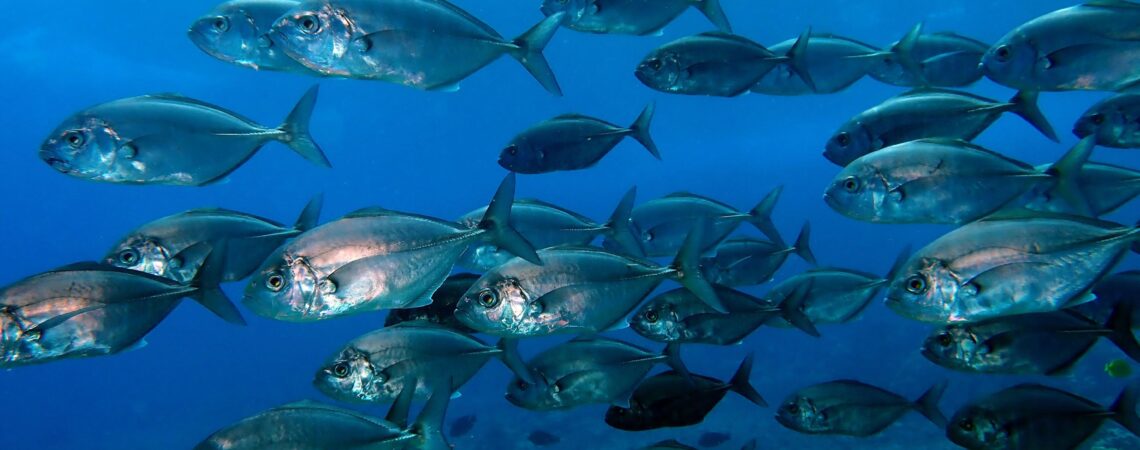Washington, D.C. (Wednesday, April 12, 2023) – A new study, conducted during COVID-19 lockdowns in Hawaiʻi from 2020-2021, shows that when it comes to Hawaiʻi’s protected waters, fishing is not the only activity to impact fish communities. Today, a coalition of scientists, including two researchers connected with National Geographic Pristine Seas, are releasing research outlining the impacts of the tourism halt on ocean wildlife at Molokini Crater, one of the most highly visited marine protected areas in the world.
Marine Life Conservation Districts in Hawaiʻi are designed to conserve and replenish marine resources and, while legally protected against most fishing and extractive practices, they are some of the most heavily trafficked marine protected areas in the world. Despite it being a fraction of a square mile in size, Molokini Crater has received more than 1,000 visitors per day for the last twenty years–all vying for the same space with some of Hawaiʻi’s most vulnerable native marine species. This human presence pushes species out of their preferred natural habitats in the nearshore ecosystems, and noise from continuous boat traffic contributes to disruption of the entire ecosystem, impacting the presence, movement, and behavior of many species that call Molokini home.
Over the course of the COVID lockdowns, scientists worked at Molokini Crater, an important cultural and geological landmark just off the coast from Maui, to study the impact that the absence of human presence had on marine wildlife. After years of research, the team found increases in the presence of a number of important fish species, namely large predators, but documented a near immediate drop in their presence when tourism opened back up post lockdown.
The continued displacement of species out of their natural habitats can cause significant impact to wildlife that relies on these areas for food, reproduction, and rest. “Our research demonstrates that human presence alone can alter the community structure and possibly the functioning of an ecosystem,” says lead author Kevin Weng of the Virginia Institute of Marine Science. “This means we can improve how tourism is configured in Hawaiʻi and around the world to reduce the impacts of human presence.”
These results highlight the importance for resource management to adapt, and take measures to reduce tourism density for the benefit of wildlife and tourists alike. According to Russell Sparks, resource manager from the Hawaiʻi Division of Aquatic Resources, “these results will help us work with marine tour operators to reduce their impacts in existing marine managed areas, while also helping the state better plan for tourism impacts with future management efforts”. The tour operators have been proactive in advocating for better management including in the establishment of the protected area as well as a ban on anchoring to protect corals.
Scientists like Dr. Alan Friedlander, Chief Scientist at National Geographic Pristine Seas and co-author of the paper, hope that this study can help inform local leadership on key measures and opportunities to help mitigate these issues and ensure Hawaiʻi’s cultural landmarks and vital ecosystems remain healthy for decades to come. “The cessation of tourism during the height of the COVID pandemic provided an unprecedented natural experiment where we could examine how an entire ecosystem responded to the absence of humans and see how quickly it reverted back to its pre-pandemic condition once people returned,” said Dr. Friedlander. “This clearly shows that even non-extractive human overuse can negatively affect a place like Molokini, whose primary purpose is the protection of marine life.”
The paper entitled Decreased tourism during the COVID-19 pandemic positively affects reef fish in a high use marine protected area will be published in today’s issue of PLOS ONE. This study is the result of a partnership with scientists at National Geographic Pristine Seas, Kevin Weng at the Virginia Institute of Marine Science, Russell Sparks and Laura Gajdzik from the Division of Aquatic Resources, Department of Land and Natural Resources, and with special support from the Maui Nui Marine Resource Council.
##
ABOUT PRISTINE SEAS
National Geographic Pristine Seas is an exploration, research and media project founded and led by National Geographic Explorer in Residence Enric Sala. The Pristine Seas team is comprised of determined scientists, policy experts and filmmakers who work to inspire the creation of protected areas where marine life can thrive—while ensuring effective management for years to come. Pristine Seas has helped to inspire the creation of 26 marine reserves, an area totalling over 6.5M square kilometers. Learn more at nationalgeographic.org/pristineseas.
